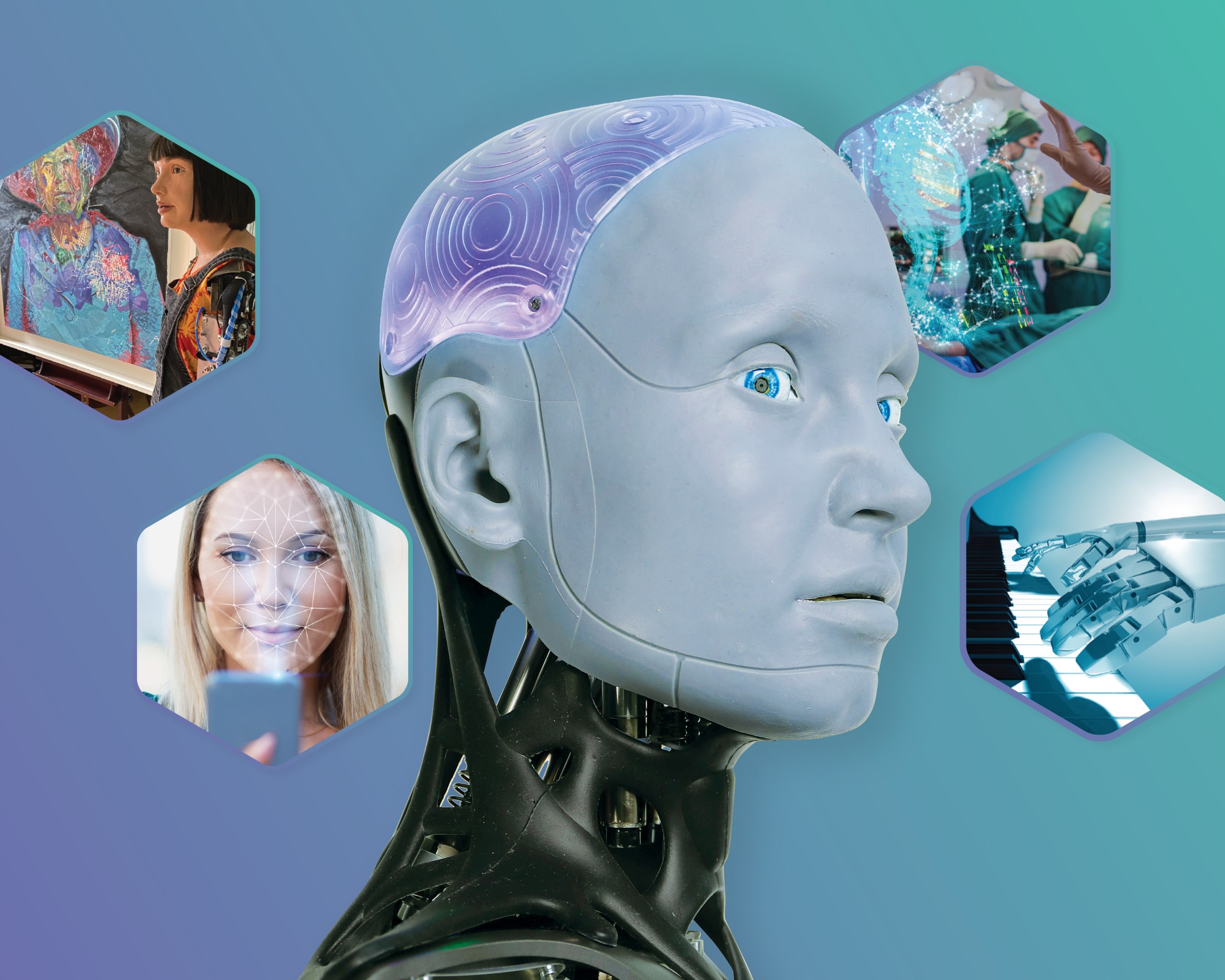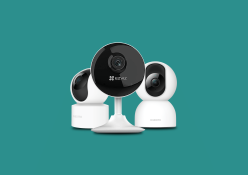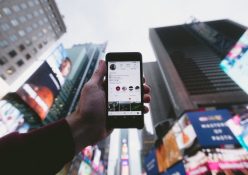Artificial intelligence is no longer the stuff of science fiction. Here are some of the many ways it’s transforming our world.
The term ‘artificial intelligence’, or AI, was coined by American Computer Scientist John Mccarthy in 1995 and relates to the science of making machines ‘intelligent’. But AI isn’t a recent technology – the concept has been around since the early 1900s as basic programs to solve mathematical equations. British logician Alan Turing famously cracked German military code during World War II, and he also devised one of the first ‘intelligent’ machines, now known as a Turing machine.
The mathematical model was created to solve simple calculations such as the square root of large numbers, and can even solve a sudoku puzzle. Since then, AI has turned into a multi-billion-dollar industry that has infiltrated every sector in some way.
Today you would be hard pressed to look around a room and not find some form of AI-assisted technology. Smart assistants such as Alexa, smartphone facial recognition, spell checking and even your Netflix suggestions all use AI that learns your preferences, physical qualities and online behaviour.
AI MODEL
ARTIFICIAL NARROW INTELLIGENCE (ANI)
The ability of an AI to perform and complete a single task. These tasks can include facial recognition, browsing the internet or playing games like chess. While classed as intelligent, these AI systems are limited to their programmed task.
ARTIFICIAL GENERAL INTELLIGENCE (AGI)
The intention of AGI is to perform a task in a comparable way to humans. It would theoretically replicate the human brain and its ability to analyse and respond to multiple stimuli at the same time. This is still an emerging type of AI and is not yet fully realised.
ARTIFICIAL SUPER INTELLIGENCE (ASI)
At the point when an AI program supersedes human cognitive ability and can ‘think for itself’, it will become an artificial super intelligence. An ASI system would theoretically think extraordinarily quickly and achieve things a single human being could not.
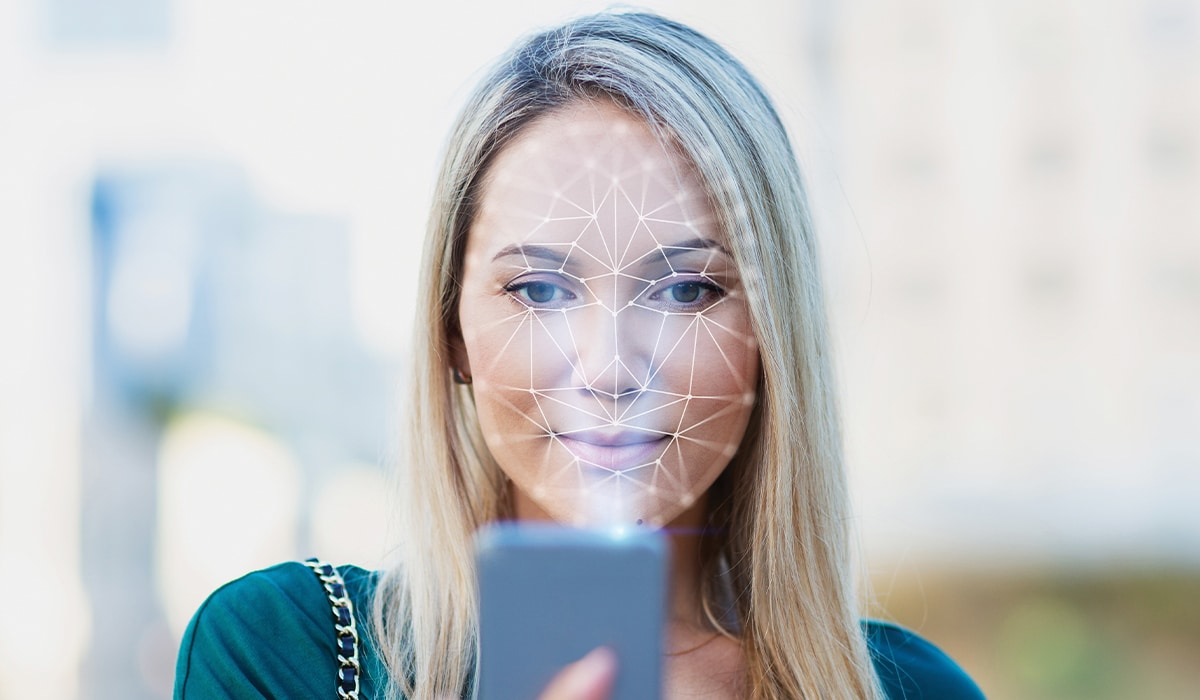
DIAGNOSIS WITHOUT DOCTORS
How AI uses test results to make medical assessments
1 SCANS: An AI program will be fed information such as a patent’s X-ray or MRI scan.
2 NEURAL NETWORK: A set of algorithms looks at the data presented in the scans and compares that to thousands of other images and pieces of information.
3 RESULTS: The AI program will make a diagnosis. In lung X-rays, AI may be able to decide if there’s evidence of pneumonia or not, for example.
4 CONSULTATION: A human radiologist might then review a scan that the AI has identified as a possible illness, such as lesions or nodules indicating pneumonia in the lungs.
5 BETTER OUTCOMES: A collaboration between humans and AI could increase the chance of illness being identified. In a study exploring human-AI hybrid models of diagnosing enlarged hearts, researchers found that together they performed eight per cent better than they would apart.
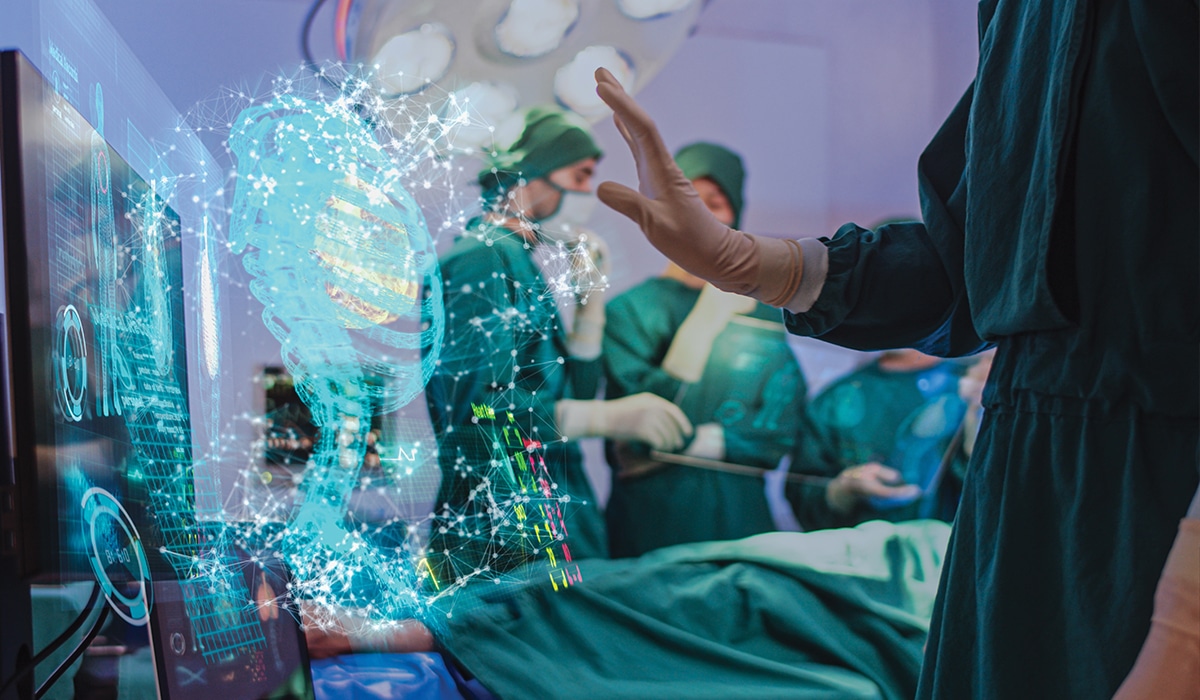
AI IN THE MILITARY
1 INTELLIGENCE: AI can be used to detect potential threats across the land, sea and skies.
2 BOMB DISPOSAL: AI and autonomous robotics in the armed forces are able to enter dangerous areas and defuse threats without risking human lives.
3 DRONES: AI and drone pilots work together to accurately locate targets for surveillance or air strikes.
4 PERSONNEL: AI is also lending a helping hand in military administrative resources, such as calculating the correct number of medical staff needed.
5 TRAINING: AI and virtual simulations can be used in combat training to offer realistic and reactive scenarios for soldiers to learn from.
TYPES OF AI
How AI uses test results to make medical assessments
MACHINE-LEARNED MUSIC
AI can be used to provide musical inspiration and offer a helping hand in the songwriting process. Companies such as Amper Music are using AI composers to create unique sounds in seconds. Note by note, Amper can be fed musical references from across all genres to assist its user with composing a new song or piece for video editing.
CHOREOGRAPHED BY COMPUTERS
Google has explored the possibility of teaching AI to dance and choreograph new routines. After analysing hundreds of hours of dance footage, the AI tool managed to produce different potential choreography sequences to choose from. Similarly, AI-driven ballet training programs have been developed to virtually monitor and correct posture in real time.
PAINTING BY ALGORITHMS
Art has been invaded by AI through image generation software and even a humanoid painter called Ai-Da. Created in 2019, Ai-Da makes use of algorithms, camera-embedded eyes and robotic arms to produce works of art. Although art is subjective and inspired, Ai-Da takes her influences from thousands of online images to generate an original work of art.
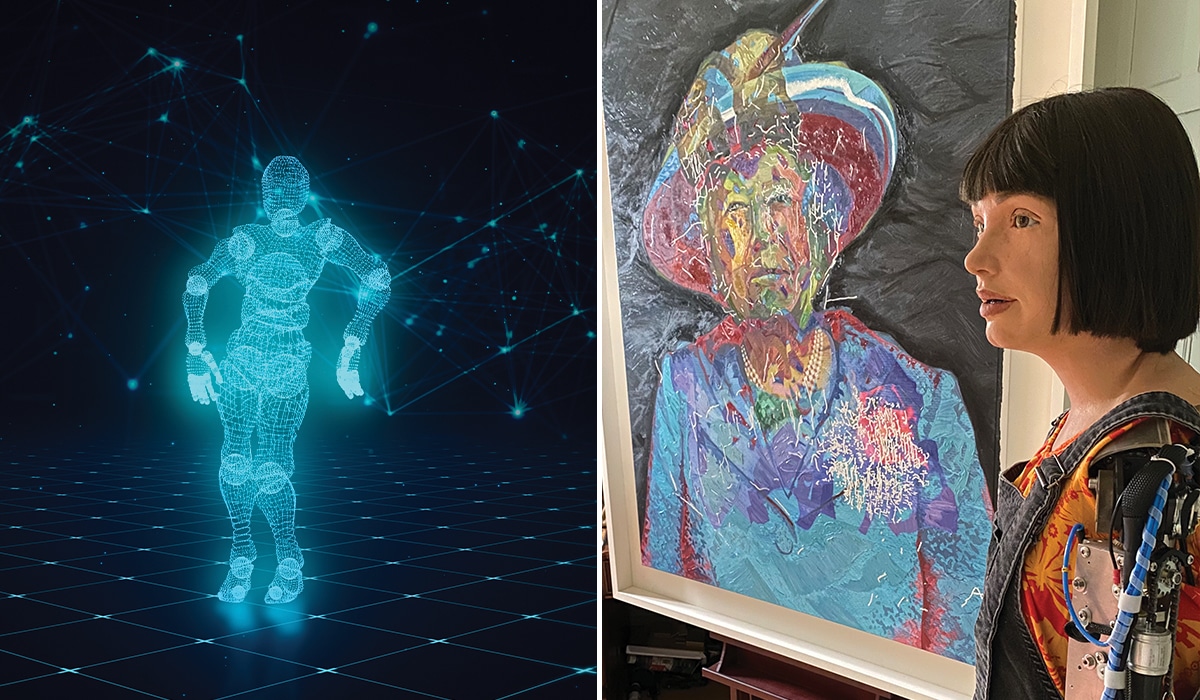
IMAGES: SHUTTERSTOCK



